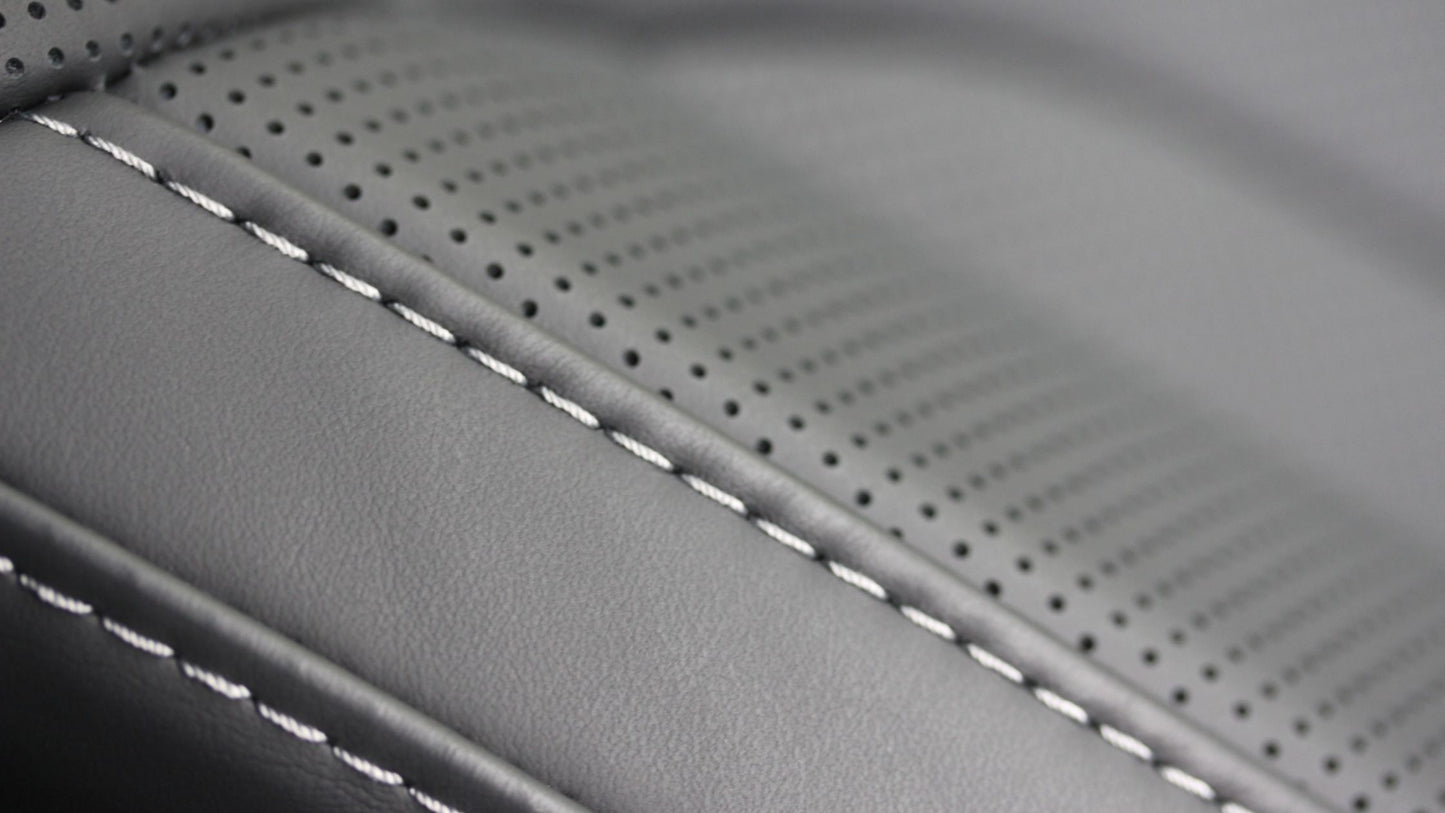
You’ll commonly find perforated leather seats in most new cars. Most discover that these seats can be problematic to detail when it comes time to clean, as these small holes are the perfect home for crumbs, dirt, and other debris. In this post we’ll touch on how to safely & effectively clean perforated leather.
To clean perforated leather seats: vacuum up large dirt, dust, and debris, gently pry any debris out of the perforations, apply a leather cleaner & conditioner, and towel off any excess with a microfiber towel.
It takes some additional time and considerations, but you can safely clean perforated leather easily. Here’s the tools you’ll need:
- Vacuum cleaner
- A toothpick or Christmas-tree bristle brush
- Leather conditioner & cleaner
- Microfiber Towels
That’s it! Now let’s get those seats looking brand new.
Vacuum up large dirt, dust, and debris
Remove the large debris found on your seats that can get in the way while detailing the finer areas of the seat. This could include small wrappers, fast food, or large clumps of dirt or debris. This step doesn’t need to be thorough, as the following steps will take care of debris found within the perforations.
Gently pry debris out of the perforations
Generally speaking, perforations are usually only 0.051 inches wide – roughly the size of a pencil tip. Factor in the large quantity of perforations found on a seat and you’ll find that cleaning these areas can be quite tedious.
If you’re working with a single seat or a small area of the seat you can address perforations with some household items such as a toothpick or dental Christmas tree bristle-brush. Both are optimal at poking out small debris. Make sure you’re careful when using both, however, as it can tear the leather or damage the perforations without proper caution.
Fear risking damage to a delicate or older leather seat? Compressed hair is another viable option at removing debris. You risk no contact with the surface, and you should be able to blow most debris out of these small holes.
Apply a leather cleaner & conditioner
Apply your choice of leather cleaner to the seat once debris is removed from the perforations. We recommend that you start with the top of the seat back, or on the headrest, and slowly work your way down the seat. Wipe the cleaner with a microfiber towel using vertical motions. This technique ensures that dirty solution doesn’t travel down the seat.
If you’re using a standard leather cleaner, you’ll want to follow it up with a leather conditioner. Standard leather cleaners are strong at lifting grime and other debris. However, these chemicals can cause damage over time – stripping the leather of natural hydrants. Applying a leather conditioner post-cleaning will keep your leather safe, soft, and luxurious.
Want to avoid the hassle of using two separate products? You can opt for a three-in-one leather cleaner that cleans, protects, and conditions all in one step. It’s an excellent choice for beginners or those who are short on time.
Towel off any excess liquids with a microfiber towel
Use a microfiber towel to wipe off any excess liquids from the seat. Apart from the previously listed damage, solutions can dry on your seat – leaving spotting or streaking on your newly cleaned seats. Take a microfiber towel and wipe from the middle to the edge of the seat on both sides.
That’s all it takes! This step-by-step process will clean & condition your perforated leather seats. Routine cleaning will help keep your perforations clean, as you’ll have less individual holes to clean from time to time.
Ever wonder what those small holes are for, exactly? Read below to find out:
The purpose behind leather perforations
Perforated leather is made by passing large pieces of leather material through a machine that punches miniature holes through the leather slabs. But why go through this additional trouble?
Because perforated leather looks convey the feeling of luxury.
Perforated leather can come in a variety of patterns outside of the factory. It isn’t the only reason, however. A large portion of the purpose behind it involves temperature control with your seat.
Perforations allow leather seats to circulate air better. It gives the seat a way to cycle heat out from the warmth of our bodies. The better breathability reduces sweat and increases overall comfort. These holes also help the seat cool down or heat up, assuming you have cooled/ventilated or heated seats.
Outside of temperature, the perforations also make the seat less slippery. They provide texture to what would otherwise be a very slippery surface. This might seem like it doesn’t matter much, but you’ll find discomfort fast if you’re constantly slipping in your seat throughout your drive.
Keep your perforated leather looking spotless
Hundreds of perforations call your leather seats home. While they can be a bit of a pain to clean, their function and overall appearance is crucial to your seat’s temperature. Just follow these steps to effectively, and safely, clean your seat: vacuum up large dirt, dust, and debris, gently pry any debris out of the perforations, apply a leather cleaner & conditioner, and towel off any excess with a microfiber towel.



